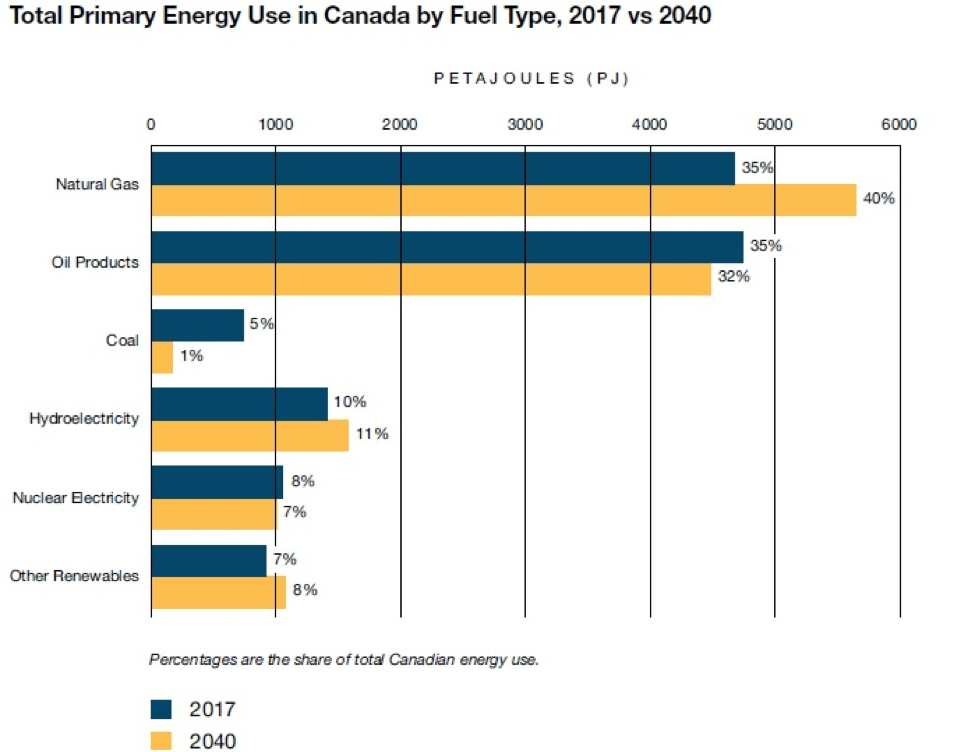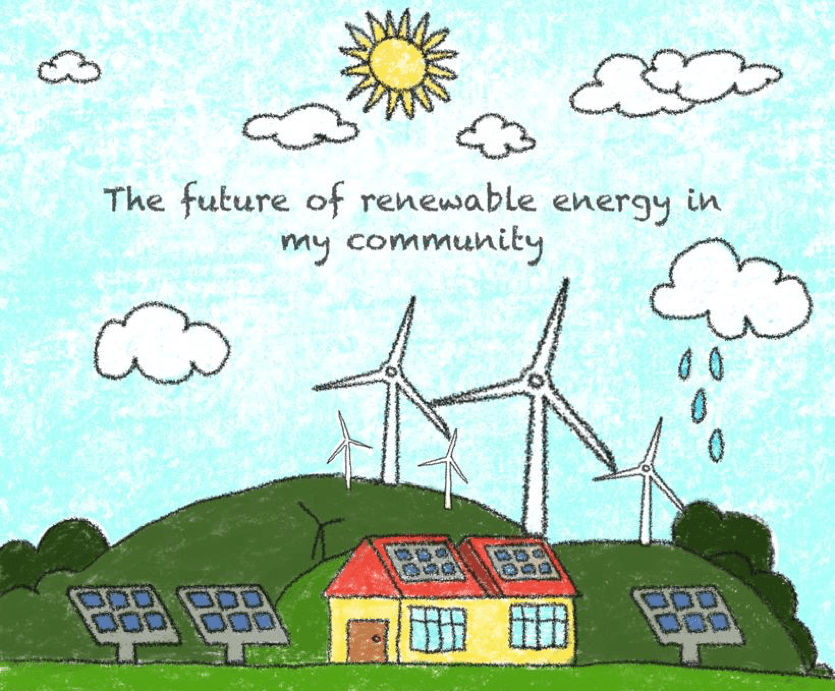ABOUT ENERGY GRIDS
Renewable vs Non-Renewable Energy
What is renewable energy?
Renewable energy is the energy that comes from natural processes or sources that are constantly being renewed at a rate equal to or faster than the rate at which they are being used. The diverse forms of renewable energy include solar, wind, geothermal, hydropower and ocean resources, solid biomass, biogas and liquid biofuels (Source: Natural Resources Canada, nrcan.gc.ca). Canada has a vast geographic diversity with several possibilities of renewable resources to generate energy.
What is non-renewable energy
Non-renewable resources are sources of energy that will either cease to exist or will take an incredible amount of time to be replenished. The main non-renewable resources include oil, natural gas, coal, and nuclear energy.
Canada has demonstrated its interest in reducing greenhouse gas emissions by 30% below the level in 2005 by the year 2030. This objective was confirmed in the Nationally Determined Contribution (NDC) to the Paris Agreement (Source: Greenhouse gas sources and sinks, executive summary 2020).


Renewable Vs Non-renewable
Canada is successfully moving towards a future with less carbon emissions and this factor is mainly due to ongoing efforts to invest in renewable sources of energy. According to Canada’s Energy Future 2019 report, the type of energy Canadians use is changing considerably from 2018 to 2040. As shown in the figure below, by 2040 Canadians will be using more natural gas and renewable sources and less coal and oil (Source: Canada’s Energy Future 2019 report).
In addition to the decrease in the use of non-renewable resources, it is also mentioned in this report a reduction in energy use from 2018 to 2040. Green technologies are key drivers underlying the slow growth in energy use and the increase in the renewable energy share. For more information, visit Canada Energy Regulator webpage here.
To meet Federal greenhouse gas emissions regulations, the future of Saskatchewan needs to be powered with cleaner options of energy. In order to meet those regulations, SaskPower is working towards its goal to reduce 40% of greenhouse gas emissions by adding more solar and wind energy into their current system. Saskatchewan’s renewable generating capacity as of the year of 2020 is approximately 23% (18% from hydro and 5% from wind). Saskatchewan’s generating capacity is shown in the pie chart:


Picture the future of renewable energy in your community
Now we want to hear from you. How do you imagine the future of renewable energy in your own community? You can use your creativity, make a drawing, a painting, or anything else that interests you, and send it to us by email.
Here is an example to inspire you!

Building a smart grid
With the increasing demand for renewable forms of energy and with technological advancements, building a smart grid is the way forward!
The smart grid introduces the two-way dialogue where electricity and data can be exchanged between the utility and its customers. This technology will make the grid more efficient, reliable, safe and greener! The smart grid enables the integration of renewable technologies into the grid, such as wind and solar energy production.
One step to a smart grid is by using net metering technology.

Understanding Net metering
Net metering allows renewable energy technology to be used at the residential, commercial, or community level. The Net metering program in Saskatchewan currently allows customers to connect up to 100 kW renewable energy at a single meter. The existing electrical meter is exchanged for a net meter or “bi-directional” meter. This meter will read power in both directions, allowing the customer to feed additional power to the grid and receive credit for the power being produced. The power credits are only good for a single meter and they reset annually, so credits are not able to be accumulated or paid out at the end of the year. This means that any installation must be sized correctly to ensure it is producing only the amount of power that it is being used by the building or site connected to the single meter.
Net metering allows the customer to benefit financially from installing a renewable energy system to offset the costs of electricity for that building or site. For example, solar can be installed on a community center where the power bill may be $1000 per month. The solar could take care of 75-100% of the electricity costs, allowing that money to be used for other communities’ needs.
For more information, please visit SaskPower
Virtual Net Metering
Virtual Net Metering (VNM), also known as Aggregated Metering, allows a renewable energy project to connect at one meter and share the generation credits with selected meters from various locations of choice by the customer. Virtual Net Metering programs exist in more than fifteen states in the US. The benefits of Virtual Net Metering include:
- Economies of scale: allows projects to be built in a centralized area, near the community, rather than on individual buildings
- Sharing generation production with multiple customers/buildings
- Truly community-owned systems
The province of Ontario has been considering changes to their Net Metering policy to allow for virtual net metering or aggregated metering. Below is a summary of the proposed changes to policy that would be required in Ontario for virtual net metering to be successful:
- Extending the credit carryover period to 12 months
- Allowing any sized renewable energy generation system, subject to the system being used primarily for the generator’s own use
- Establishing a billing method for Single-Entity Virtual Net Metering
- Allowing for the use of energy storage when paired with renewable energy
- Updating opt-in terms by allowing existing net metering customers to opt-in to the updated program.
SaskPower currently does not have a virtual net metering program and this would require many policy changes, including the implementation of smart meters and other related infrastructure to support VNM. Saskatoon Light and Power is currently running a net metering pilot project in the City of Saskatoon. For Indigenous communities in Saskatchewan, a virtual net metering program would significantly benefit communities as it would allow a community to install a larger community-scale renewable energy system and use the production credits to offset electricity usage for multiple buildings and residences in the community.
FNPA Virtual Net Metering Pilot Project
FNPA is working with interested General Member communities on developing a virtual net metering pilot project with First Nations and Metis communities in Saskatchewan. A VNM pilot project would allow Indigenous communities in Saskatchewan to benefit from the economic, social and environmental considerations of community renewable energy projects at the community scale. A virtual net metering program would allow the community to own the renewable energy generation facility and share the production generation with community-owned buildings, Elders homes, residences, and other uses as they choose.
Project Description
Number of Communities: 5-7
Estimated Generation Required per community: 1 MW – 2 MW
M.Ss. (Energy Security)
FNPA is a proud affiliate of the Mater of Sustainability: Energy Security at the University of Saskatchewan.
The mission of the Energy Security stream is to empower a network of northern, Indigenous, remote, and career professionals through distance education and purpose-driven practical experience to lead sustainable community energy development. Students graduating from this program will have workforce-ready skills to lead renewable energy development projects in communities across the world. Taught by faculty who work directly in the industry, the Energy Security program is the only one of its kind in North America, with opportunities for both domestic and international internships. Career prospects include job titles such as Community Energy Planner, Clean Energy Researcher, Sustainability Educator, and Renewable Energy Developer.
Let’s talk about a partnership today!
FNPA is a Indigenous governed, not-for-profit development company, reducing development costs and risks for Indigenous-led projects. FNPA is the pathway to powerful opportunities.
Discover the possibilities and connect with our Team, lets chat!
Let's Chat!
Head
Office
1 First Nations Way
Atim kâ-mihkosit Urban Reserve
Regina, SK S4S 7K2
Treaty 4 Territory
Ontario
Office
231 Niagara St.
Toronto, ON M6J 2L5
Treaty 13 Territory
Alberta
Office
OFFICE HOURS
Monday to Friday 8:30a.m.–4:30p.m.
Saturday Closed
Sunday Closed
